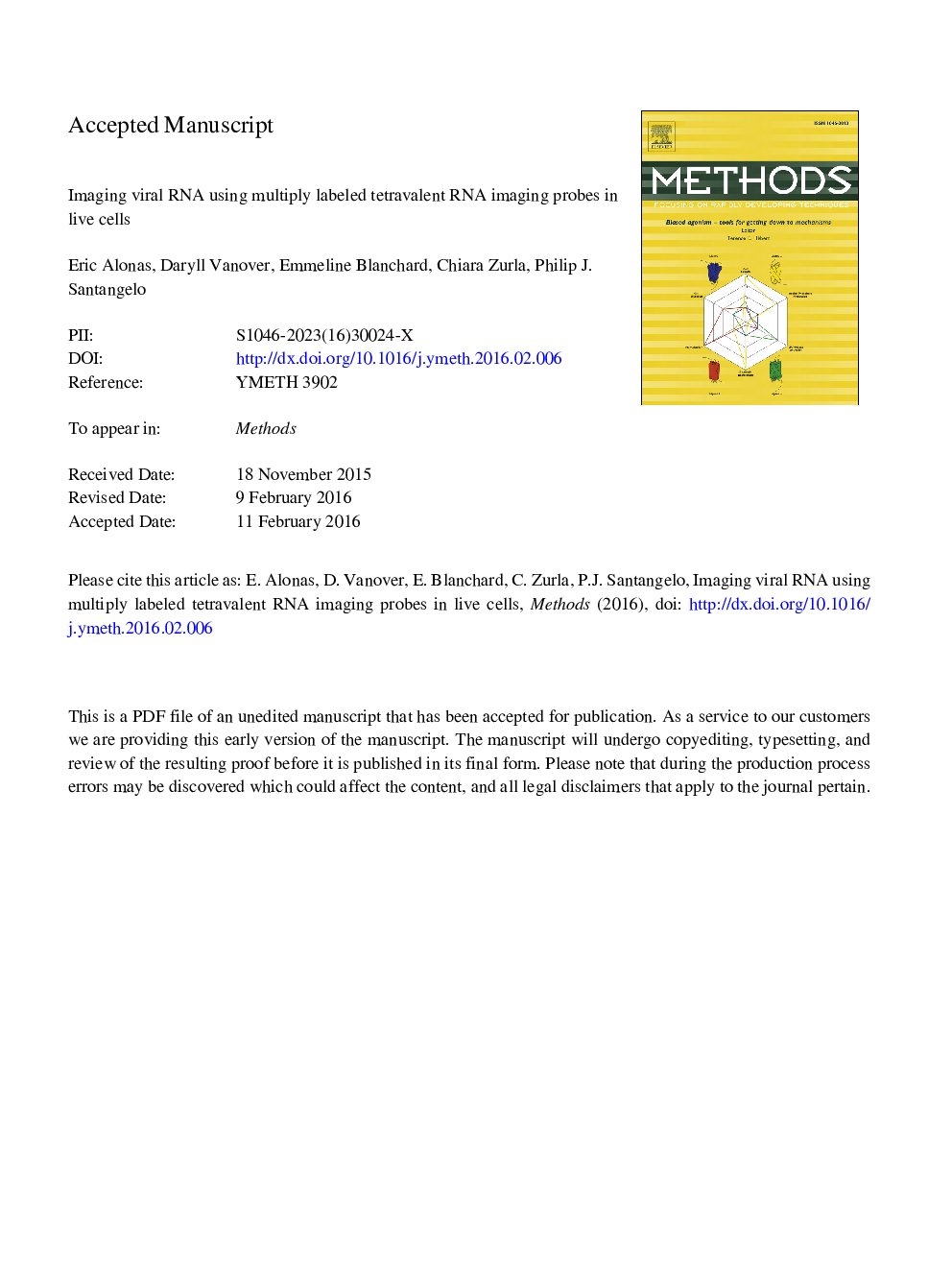| Article ID | Journal | Published Year | Pages | File Type |
|---|---|---|---|---|
| 8340358 | Methods | 2016 | 18 Pages |
Abstract
Viruses represent an important class of pathogens that have had an enormous impact on the health of the human race. They are extraordinarily diverse; viral particles can range in size from â¼80 nm to â¼10 μm in length, and contain genomes with RNA or DNA strands. Regardless of their genome type, RNA species are frequently generated as a part of their replication process, and for viruses with RNA genomes, their loading into the virion represents a critical step in the creation of infectious particles. RNA imaging tools represent a powerful approach to gain insight into fundamental viral processes, including virus entry, replication, and virion assembly. Imaging viral processes in live cells is critical due to both the heterogeneity of these processes on a per cell basis, and the inherent dynamics of these processes. There are a number of methods for labeling RNA in live cells; we'll introduce the myriad of methods and then focus on one approach for labeling viral RNA, using multiply-labeled tetravalent RNA imaging probes (MTRIPs), which do not require engineering of the target RNAs. We feel this approach is advantageous given many viral genomes may not tolerate large nucleotide insertions into their sequences.
Related Topics
Life Sciences
Biochemistry, Genetics and Molecular Biology
Biochemistry
Authors
Eric Alonas, Daryll Vanover, Emmeline Blanchard, Chiara Zurla, Philip J. Santangelo,
